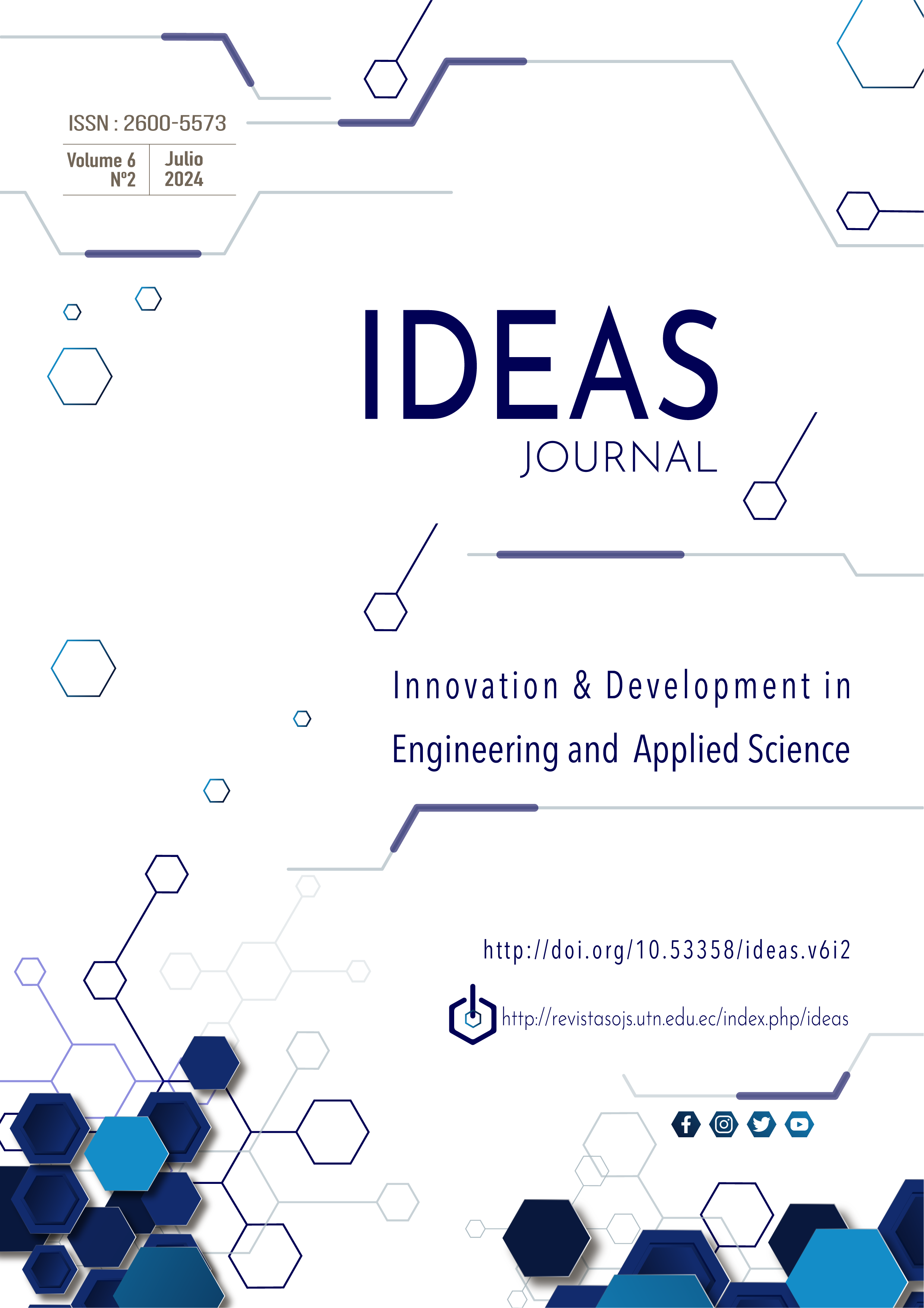Análisis de la resistencia a la tracción y elongación del no tejido de lana de oveja para elaborar sombreros de fieltro
Contenido principal del artículo
Resumen
La investigación para obtener no tejido de lana de oveja (NWW) para la aplicación en sombreros de fieltro inicia desde el lavado de la lana de oveja (SW) se centrifuga y seca al ambiente, luego se abre y mezcla SW en la máquina abridora y mezcladora (O) para obtener una homogenización con promedio de 40mm, a continuación ingresa a la máquina carda (C) consiguiendo alinear las fibras en dirección de máquina (MD) y dirección contraria (CD) enrollado capa sobre capa sobre un cono con forma adecuada en grosor y tamaño. Posteriormente se coloca en una plancha vibradora (VP) al que ingresa vapor a 1200 C desde un caldero de vapor (SB) hacia la capa de SW, se amasa y frota con movimientos circulares de vaivén para compactar y enfieltrar formando el NWW colocando al ambiente y secar con diferentes formas y tamaños. Los datos encontrados se analizarón mediante el sofware Past 4 y tienen una confiabilidad del 95% (P>0,05), llegando a la conclusion que su elongación E en MD y CD tienen promedios de 59,56 y 58,27 % respectivamente, como tambien en resistencia a la tracción TS 335,846 MD y 392,218 CD newton, resaltando más la energia a la rotura EB con 20052,36 MD y 21951,38 CD joules cuando se aplica una fuerza.
Descargas
Detalles del artículo
Citas
Akioka, S. et al.: Selective recovery of palladium by wool resin and woven wool fabric resinrbents. HYDROMETALLURGY. 203, (2021). https://doi.org/10.1016/j. hydromet.2021.105629. DOI: https://doi.org/10.1016/j.hydromet.2021.105629
Alyousef, R.: Enhanced acoustic properties of concrete composites comprising modified waste sheep wool fibers. J. Build. Eng. 56, 104815 (2022). https://doi.org/ https://doi.org/10.1016/j.jobe.2022.104815. DOI: https://doi.org/10.1016/j.jobe.2022.104815
Atbir, A. et al.: Improvement of thermomechanical properties of porous plaster reinforced with a network of Morocco sheep wool skeletons for Energy efficiency. Build. Environ. 234, 110171 (2023). https://doi.org/https://doi.org/10.1016/j. buildenv.2023.110171. DOI: https://doi.org/10.1016/j.buildenv.2023.110171
Berzi, L. et al.: Sustainable Revamping of Wool Carbonization Systems. In: 2021 IEEE International Conference on Environment and Electrical Engineering and 2021 IEEE Industrial and Commercial Power Systems Europe (EEEIC / I&CPS Europe). pp. 1–6 (2021). https://doi.org/10.1109/EEEIC/ICPSEurope51590.2021.9584659. DOI: https://doi.org/10.1109/EEEIC/ICPSEurope51590.2021.9584659
Boostani, B. et al.: Using an eco-friendly deep eutectic solvent for waterless anti felting of wool fibers. J. Clean. Prod. 386, 135732 (2023). https://doi.org/https://doi. org/10.1016/j.jclepro.2022.135732. DOI: https://doi.org/10.1016/j.jclepro.2022.135732
Boria, S. et al.: Potential of wool felts in combination with glass fibres: Mechanical and low velocity impact assessment. Compos. PART B-ENGINEERING. 118, 158–168 (2017). https://doi.org/10.1016/j.compositesb.2016.09.088. DOI: https://doi.org/10.1016/j.compositesb.2016.09.088
Cai, J. et al.: Developing ``Eco-wool{’’} Compliant Supply Chains for Australian Wool. In: PROCEEDINGS OF THE 12TH INTERNATIONAL WOOL RESEARCH CONFERENCE, VOLS I AND II. pp. 10–13 (2010).
Erkmen, J., Sari, M.: Hydrophobic thermal insulation material designed from hazelnut shells, pinecone, paper and sheep wool. Constr. Build. Mater. 365, 130131 (2023). https://doi.org/https://doi.org/10.1016/j.conbuildmat.2022.130131. DOI: https://doi.org/10.1016/j.conbuildmat.2022.130131
Hatcher, S. et al.: Wool buyers do not adversely discount fine wool grown in `non traditional’ environments. WOOL Technol. SHEEP Breed. 51, 2, 163–175 (2003).
Kantouch, A. et al.: Improvement of the felting and shrinking resistance of wool using environmentally acceptable treatments. J. Text. Inst. 98, 1, 65–71 (2007). https://doi. org/10.1533/joti.2005.0249. DOI: https://doi.org/10.1533/joti.2005.0249
Kishor Sharma, Y. et al.: Experimental investigation on mechanical and thermal characteristics of waste sheep wool fiber-filled epoxy composites. Mater. Today Proc. (2023). https://doi.org/https://doi.org/10.1016/j.matpr.2023.01.157. DOI: https://doi.org/10.1016/j.matpr.2023.01.157
Liu, Y. et al.: Research on the edge detection of the cashmere and wool fibre images. In: 2009 9th International Conference on Electronic Measurement & Instruments. pp. 4–428 (2009). https://doi.org/10.1109/ICEMI.2009.5274040. DOI: https://doi.org/10.1109/ICEMI.2009.5274040
Miao, M.: 12 - High-performance wool blends. In: Johnson, N.A.G. and Russell, I.M. (eds.) Advances in Wool Technology. pp. 284–307 Woodhead Publishing (2009). https://doi.org/https://doi.org/10.1533/9781845695460.2.284. DOI: https://doi.org/10.1533/9781845695460.2.284
Monreal-Perez, P. et al.: Full-scale dynamometer tests of composite railway brake shoes including latxa sheep wool fibers. J. Clean. Prod. 379, 134533 (2022). https:// doi.org/https://doi.org/10.1016/j.jclepro.2022.134533. DOI: https://doi.org/10.1016/j.jclepro.2022.134533
Moosanezhad Khabisi, M. et al.: Genome-wide DNA arrays profiling unravels the genetic structure of Iranian sheep and pattern of admixture with worldwide coarse wool sheep breeds. Genomics. 113, 6, 3501–3511 (2021). https://doi.org/https:// doi.org/10.1016/j.ygeno.2021.07.019. DOI: https://doi.org/10.1016/j.ygeno.2021.07.019
Nogueira, C.D.C. et al.: Boosting second-generation ethanol titers from green coconut fiber by using high-concentration polyethylene glycol. Ind. Crops Prod. 166, (2021). https://doi.org/10.1016/j.indcrop.2021.113494. DOI: https://doi.org/10.1016/j.indcrop.2021.113494
Parlato, M.C.M. et al.: Assessment of sheep wool waste as new resource for green building elements. Build. Environ. 225, 109596 (2022). https://doi.org/https://doi. org/10.1016/j.buildenv.2022.109596. DOI: https://doi.org/10.1016/j.buildenv.2022.109596
Pina, A.C. et al.: CO2 capture and biomethane obtention using activated carbon filter of animal origin. MRS Adv. 3, 61, 3589–3600 (2018). https://doi.org/10.1557/ adv.2018.588. DOI: https://doi.org/10.1557/adv.2018.588
Raja, A.S.M. et al.: Feltability of coarse wool and its application as technical felt. INDIAN J. FIBRE & Text. Res. 38, 4, 395–399 (2013).
dos Santos, H.N. et al.: Wool felt: Characterization, comparison with other materials, and investigation of its use in hospital accessories. Text. Res. J. 92, 21–22, 3940–3955 (2022). https://doi.org/10.1177/0040517520915836. DOI: https://doi.org/10.1177/0040517520915836
Sawyer, G. et al.: Pre- and post-partum variation in wool cortisol and wool micron in Australian Merino ewe sheep (Ovis aries). PeerJ. 9, (2021). https://doi.org/10.7717/ peerj.11288. DOI: https://doi.org/10.7717/peerj.11288
Sitotaw, D.B. et al.: Characterization of the wool fiber physical properties of Ethiopian indigenous sheep breeds. J. Text. Inst. 111, 8, 1198–1205 (2020). https://doi.org/10 .1080/00405000.2019.1689774. DOI: https://doi.org/10.1080/00405000.2019.1689774
Soun, B. et al.: Effect of Transglutaminase Enzyme on Physico-mechanical Properties of Rambouillet Wool Fiber. J. Nat. Fibers. 17, 6, 793–801 (2020). https://doi.org/10. 1080/15440478.2018.1534187. DOI: https://doi.org/10.1080/15440478.2018.1534187
Vujasinovic, E., Andrassy, M.: The investigation of coarse wool felting property. TEKSTIL. 52, 6, 268–277 (2003).
Yu, H. et al.: Tensile Properties of Australian Soft Rolling Skin Wool and Conventional Merino Wool. J. Nat. FIBERS. 19, 16, 14620–14633 (2022). https://doi.org/10.1080/ 15440478.2022.2068173. DOI: https://doi.org/10.1080/15440478.2022.2068173
Yu, H. et al.: Understanding the difference in softness of Australian Soft Rolling Skin wool and conventional Merino wool. Text. Res. J. 92, 17–18, 3130–3141 (2022). https://doi.org/10.1177/00405175211050524. DOI: https://doi.org/10.1177/00405175211050524
Zenda, M. et al.: An analysis of the contribution of wool characteristics on price determination of Merino Wool and White Wool all combined in South Africa. SMALL Rumin. Res. 219, (2023). https://doi.org/10.1016/j.smallrumres.2022.106890 DOI: https://doi.org/10.1016/j.smallrumres.2022.106890

